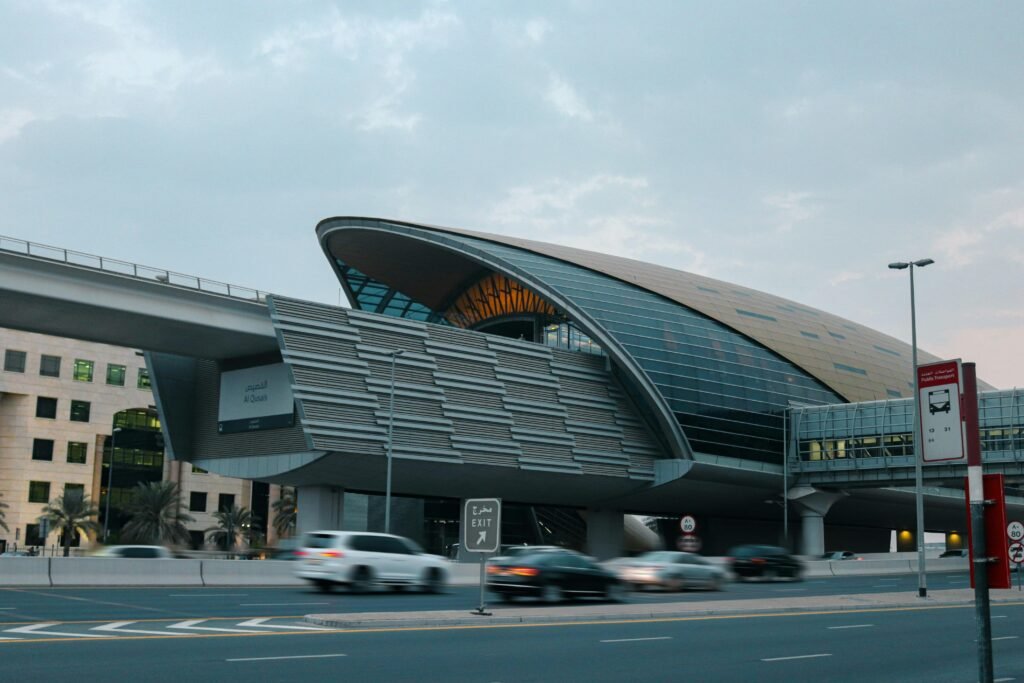
Dubai, one of the most advanced cities in the world, is constantly improving its infrastructure to cope with rapid development and increasing traffic. To manage traffic efficiently, the city has implemented an electronic toll system called Salik. If you’re driving in Dubai, you’ve probably heard of Salik gates, which automatically deduct toll charges from vehicles passing through them. These gates are strategically placed at key points throughout the city to control traffic flow. There are 8 Salik gates in Dubai.
In this blog, I will explain everything you need to know about How Many Salik Gates are in Dubai. Including where they are located, how they work, and how to use them. Whether you’re a resident or a visitor, understanding Salik is essential for a smooth driving experience in Dubai.
What is Salik?
Salik is an electronic toll road system introduced by the Roads and Transport Authority (RTA) in Dubai. Launched in 2007, the system aims to reduce congestion, manage traffic, and generate revenue for the maintenance and development of the city’s roads. Salik operates without the need for physical toll booths. Instead, it uses Radio Frequency Identification (RFID) technology to automatically deduct toll charges when vehicles pass through designated toll gates.
Key Features of the Salik System
- Contactless Payment: Salik operates without cash transactions or stopping at toll booths.
- RFID Stickers: Vehicles need to have Salik tags attached to their windshields.
- Automatic Deduction: The toll amount is automatically deducted from the prepaid Salik account.
- No Expiration: Salik tags do not expire, so you don’t need to replace them regularly.
- Simple Setup: Easy to recharge and monitor through the RTA website or mobile app.
Dubai’s Salik Gates: A Guide
Dubai currently has eight Salik gates located at major highways and bridges that are crucial for daily commutes and long-distance travel. These gates play an essential role in reducing bottlenecks, ensuring smoother traffic flow across the city.
While all Salik gates in Dubai operate around the clock, two specific gates—Al Maktoum Bridge and Al Safa—offer toll-free hours between 10:00 PM and 6:00 AM. This timing provides a cost-effective option for night travelers in these areas.
Below is a comprehensive guide to each of the eight Salik gates:
1. Al Maktoum Bridge (Umm Hurair Road)
Located on the iconic Al Maktoum Bridge, this Salik gate is strategically placed to manage traffic between Umm Hurair and Dubai Marina. The bridge is one of the major crossings over the Dubai Creek, and the Salik gate here helps reduce congestion during peak hours.
Why is it Important
- Connects major business districts like Deira and Bur Dubai.
- Offers an alternate route to avoid heavy traffic on other bridges.
Toll Gate Instructions
- Ensure your vehicle has a Salik tag before crossing the bridge.
- AED 4 is automatically deducted when you pass through this gate.
2. Al Garhoud Bridge (Sheikh Rashid Road)
The Al Garhoud Bridge is another crucial crossing point over Dubai Creek. The Salik gate here is situated on Sheikh Rashid Road, which links Sheikh Zayed Road to Al Khail Road. This bridge is one of the busiest in the city, particularly during the morning and evening rush hours.
Why is it Important
- A vital route for those commuting to and from Dubai International Airport.
- One of the fastest ways to access Dubai’s central business districts.
Toll Gate Instructions
- Ensure your Salik account is active before crossing.
- AED 4 will be deducted when you pass through the gate.
3. Al Mamzar North (Al Ittihad Road)
This Salik gate is located on Al Ittihad Road, north of Al Mamzar Beach Park. The Al Mamzar North Gate helps manage traffic for drivers heading toward Sharjah, especially during peak travel times when congestion is common.
Why is it Important
- It’s a key route for those traveling between Dubai and Sharjah.
- Reduces traffic jams on the busy Al Ittihad Road.
Toll Gate Instructions
- Drive under the gate; AED 4 will automatically be deducted.
- Ensure you have a working Salik tag.
Read Also: Dubai Mall: 15 Must-Do Adventures for All Ages
4. Al Mamzar South (Al Ittihad Road)
Located on Al Ittihad Road, south of Al Mamzar Beach Park, this gate complements the Al Mamzar North Gate by controlling traffic in the opposite direction. It plays an essential role for drivers heading toward Dubai from Sharjah.
Why is it Important
- Balances traffic flow between Dubai and Sharjah.
- Reduces delays for drivers heading into the city.
Toll Gate Instructions
- Like all Salik gates, ensure your account has sufficient balance.
- AED 4 is charged automatically when you pass through.
5. Al Safa (Sheikh Zayed Road)
The Al Safa Salik Gate is located on the busy Sheikh Zayed Road, near the Al Safa intersection. Sheikh Zayed Road is Dubai’s main artery, connecting several business hubs, shopping areas, and residential neighborhoods.
Why is it Important
- Reduces traffic on Sheikh Zayed Road, especially during peak hours.
- A critical point for drivers traveling from downtown to the outskirts of Dubai.
Toll Gate Instructions
- Drive past the gate, and AED 4 will be deducted.
- Ensure your Salik tag is installed correctly.
6. Airport Tunnel (Beirut Street)
Situated within the Airport Tunnel on Beirut Street, this Salik gate serves passengers and staff heading to and from Dubai International Airport. The tunnel provides an underground route that reduces surface-level traffic around the airport area.
Why is it Important
- Essential for airport traffic management.
- Reduces congestion around one of the busiest airports in the world.
Toll Gate Instructions
- As you pass through the tunnel, AED 4 is deducted from your account.
- Double-check your Salik balance if you frequently travel to the airport.
7. Al Barsha (Sheikh Zayed Road)
Located on Sheikh Zayed Road, near the Al Barsha intersection, the Al Barsha Salik Gate controls traffic along one of Dubai’s busiest residential and commercial districts. Al Barsha is home to popular attractions such as the Mall of the Emirates and several hotels and businesses.
Why is it Important
- Eases traffic flow on the main thoroughfare connecting the city center with residential areas.
- A critical gate for residents living in Al Barsha or Jumeirah.
Toll Gate Instructions
- Like other gates, AED 4 will be deducted as you drive past.
- Make sure your Salik tag is properly registered.
8. Jebel Ali (Sheikh Zayed Road)
The Jebel Ali Salik Gate is located in the southern part of Sheikh Zayed Road, near the Jebel Ali intersection. This area is a major industrial hub and home to the Jebel Ali Port and Free Zone.
Why is it Important
- Key for managing traffic for heavy-duty vehicles and those commuting to industrial areas.
- Helps in controlling traffic congestion on the outskirts of Dubai.
Toll Gate Instructions
- AED 4 is deducted when passing through the gate.
- Ensure your Salik tag is functioning, especially if you regularly commute in this area.
How Does Salik Work?

Step-by-Step Guide Ontosing Salik
- Purchase a Salik Tag:
- You can buy a Salik tag at petrol stations, online through the RTA website, or at Saat-like customer service centers.
- Install the Tag:
- The Salik tag should be placed on the inside of your vehicle’s windshield, behind the rearview mirror.
- Activate the Tag:
- Once you’ve purchased the tag, activate it by visiting the Salik website or using the Salik app. You will need to provide your vehicle registration details to link the tag to your account.
- Recharge Your Account:
- Ensure that your Salik account always has enough balance. You can recharge online, through the RTA app, or by visiting authorized centers.
- PaPass-Through Gate:
- As you drive through any of the Salik gates, the system will automatically detect your vehicle and deduct AED 4 from your Salik account.
How to Check Your Salik Balance

- Log in to the Salik website or the RTA mobile app to check your balance and account activity.
- You can also use SMS services to get updates on your Salik account.
What Happens If You Don’t Have a Salik Tag
Driving through a Salik gate without a registered tag or sufficient balance will result in fines. The first violation will cost AED 50, and repeated offenses can lead to higher penalties. Make sure to keep your account in good standing to avoid unnecessary fines.
How to Recharge Your Salik Account
- Online: Use the Salik website or RTA app.
- SMS: Recharge through SMS by linking your phone number to your account.
- Bank Apps: Many banks offer direct recharge options through their mobile apps.
- In-Person: Recharge at petrol stations or Salik service centers.
Read Also: Dubai Car Ownership Transfer: Simplified
Conclusion
Dubai’s Salik system is a key part of managing the city’s traffic flow, especially on major highways like Sheikh Zayed Road and bridges like Al Garhoud and Al Maktoum. By understanding how the system works and where the gates are located, you can avoid traffic congestion and travel smoothly across Dubai. Make sure your Salik tag is active and that you’re aware of the locations of these gates to enjoy a hassle-free driving experience in the city.

